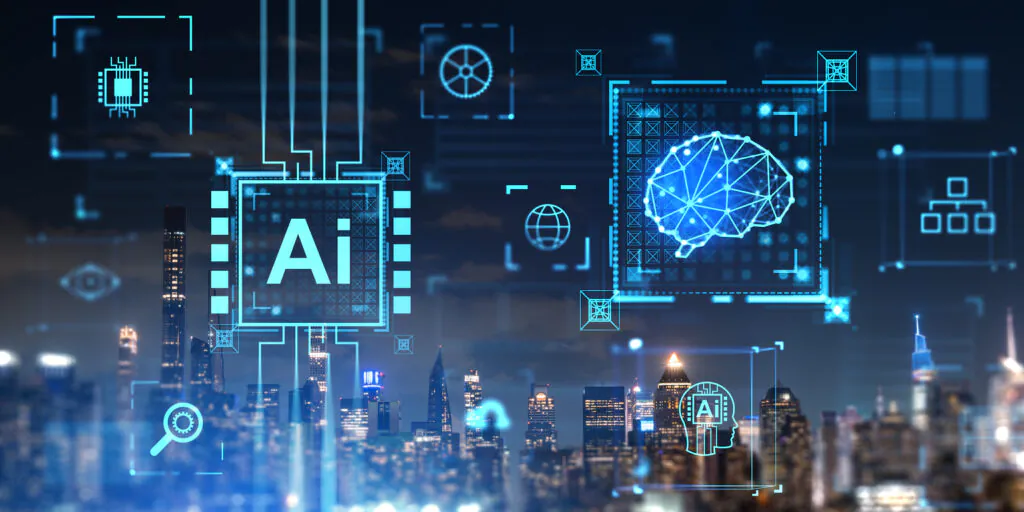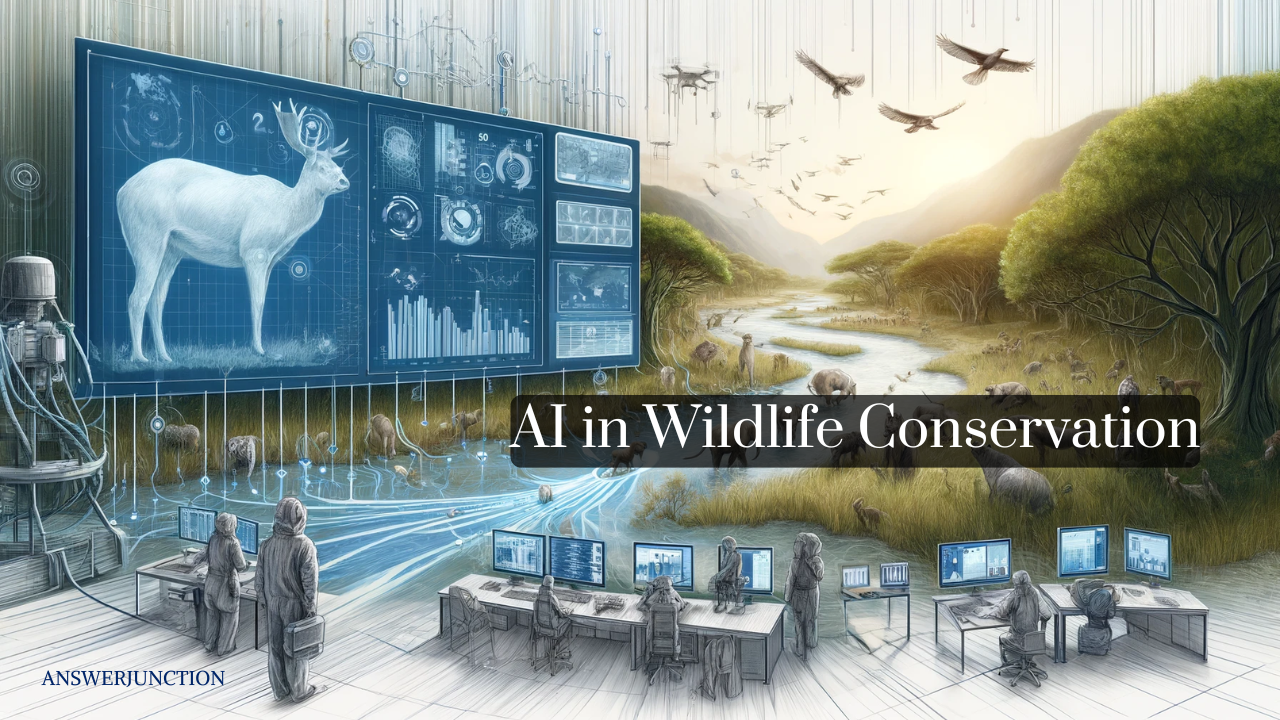In recent years, the intersection of technology and wildlife conservation has gained considerable attention, with artificial intelligence (AI) playing a pivotal role in preserving biodiversity and protecting endangered species. This article explores the various applications of AI in wildlife conservation, how it contributes to the protection of our planet, and the future of this innovative approach. By leveraging advanced technologies, conservationists can enhance their efforts to safeguard wildlife and ecosystems from the growing threats of poaching, habitat destruction, and climate change.
Understanding the Role of AI in Wildlife Conservation

AI refers to the simulation of human intelligence processes by machines, particularly computer systems. In wildlife conservation, AI tools analyze vast amounts of data to detect patterns and make predictions. This capability is crucial in monitoring wildlife populations, understanding animal behaviours, and predicting potential threats. The use of AI technologies such as machine learning, computer vision, and data analytics empowers conservationists to make informed decisions, streamline their operations, and optimize resource allocation.
Monitoring Wildlife Populations
One of the most significant challenges in wildlife conservation is accurately monitoring animal populations. Traditional methods, such as manual counting and field surveys, can be time-consuming and labour-intensive. AI-driven technologies, including remote sensing and automated camera traps, enable conservationists to gather data more efficiently and effectively.
Remote sensing uses satellite imagery and drones equipped with AI algorithms to monitor changes in land use, habitat quality, and animal movements. By analyzing these data, conservationists can identify critical habitats, track population trends, and assess the impacts of human activities on wildlife.
Automated camera traps equipped with AI-powered image recognition software can analyze thousands of photographs taken in the wild. These cameras can identify individual animals based on their unique markings, monitor their behaviour, and track their movements. This technology not only saves time but also improves the accuracy of wildlife population assessments.
Combatting Poaching and Illegal Wildlife Trade
Poaching remains one of the most significant threats to wildlife worldwide. AI technologies are becoming essential tools in the fight against poaching and illegal wildlife trade. Machine learning algorithms can analyze data from various sources, such as anti-poaching patrols, social media, and market trends, to identify potential poaching hotspots and predict illegal activities.
For instance, the Wildlife Conservation Society (WCS) utilizes AI to analyze data from patrols and law enforcement activities to detect patterns associated with poaching incidents. By integrating AI with geographical information systems (GIS), conservationists can visualize and anticipate poaching threats, allowing them to deploy resources more effectively to protect vulnerable species.
Moreover, AI can help in tracking the illegal wildlife trade by analyzing online marketplaces and social media platforms where wildlife products are sold. By identifying key trends and monitoring suspicious activities, AI tools can aid law enforcement agencies in their efforts to combat trafficking and ensure that offenders are brought to justice.
Enhancing Habitat Conservation Efforts
AI also plays a crucial role in habitat conservation, helping to preserve ecosystems that are vital for wildlife survival. Through AI-driven predictive analytics, conservationists can assess the potential impacts of land-use changes, climate change, and human activities on habitats.
By using AI to analyze environmental data, such as temperature, rainfall, and vegetation cover, conservationists can identify areas at risk of degradation and prioritize their conservation efforts. This proactive approach allows for the development of effective habitat management strategies, ensuring that critical ecosystems remain intact and capable of supporting diverse wildlife populations.
Improving Species Recovery Programs

AI technology is particularly beneficial in species recovery programs, where the goal is to restore populations of endangered or threatened species. By analyzing genetic data and population dynamics, AI can help conservationists make informed decisions about breeding programs and habitat restoration efforts.
For example, AI can assist in identifying genetically viable individuals for breeding to maximize genetic diversity within small populations. Furthermore, machine learning algorithms can predict the success of different conservation strategies based on historical data, allowing conservationists to choose the most effective methods for species recovery.
Data Management and Analysis
The sheer volume of data generated in wildlife conservation efforts can be overwhelming. AI technologies enable conservationists to manage and analyze this data efficiently, transforming raw information into actionable insights. By employing natural language processing (NLP) and machine learning techniques, AI can extract relevant information from research papers, reports, and field notes, helping conservationists stay informed about the latest developments in their field.
Additionally, AI-powered data visualization tools can present complex datasets in an easily understandable format, allowing conservationists to communicate their findings effectively to stakeholders, policymakers, and the public. This enhanced communication is essential for garnering support and funding for conservation initiatives.
Collaborating with Local Communities
The success of wildlife conservation efforts often depends on the involvement of local communities. AI technologies can facilitate collaboration by providing communities with tools to monitor and protect their natural resources. Mobile applications powered by AI can enable locals to report wildlife sightings, illegal activities, and environmental changes in real-time.
For example, the use of AI-driven apps like Wildlife Watch allows community members to contribute valuable data about local wildlife populations and habitats. By empowering local communities to take an active role in conservation, AI fosters a sense of stewardship and responsibility toward the environment.
The Future of AI in Wildlife Conservation
As AI technology continues to advance, its applications in wildlife conservation are likely to expand. The integration of AI with emerging technologies such as blockchain, the Internet of Things (IoT), and augmented reality (AR) has the potential to revolutionize conservation practices.
For instance, blockchain technology can enhance transparency in wildlife trade by providing an immutable record of transactions. This can help trace the origins of wildlife products and ensure that they are sourced sustainably. Similarly, IoT devices can collect real-time data on wildlife movements and habitat conditions, providing conservationists with crucial information for their efforts.
Furthermore, AR can be used to engage the public in wildlife conservation efforts. By creating immersive experiences that highlight the importance of biodiversity and the threats facing wildlife, AR applications can raise awareness and inspire action among audiences.
A Call to Action
The integration of AI in wildlife conservation represents a transformative opportunity to protect our planet’s biodiversity. By harnessing the power of technology, conservationists can enhance their efforts to monitor wildlife populations, combat poaching, conserve habitats, and engage local communities. However, the success of these initiatives relies on collaboration between governments, NGOs, local communities, and technology developers.
As we move forward, it is essential to continue investing in AI research and development tailored to wildlife conservation. By doing so, we can ensure a brighter future for the planet and its diverse species. The challenges facing wildlife are significant, but with innovative solutions and collective action, we can work towards a sustainable and thriving ecosystem for generations to come.




